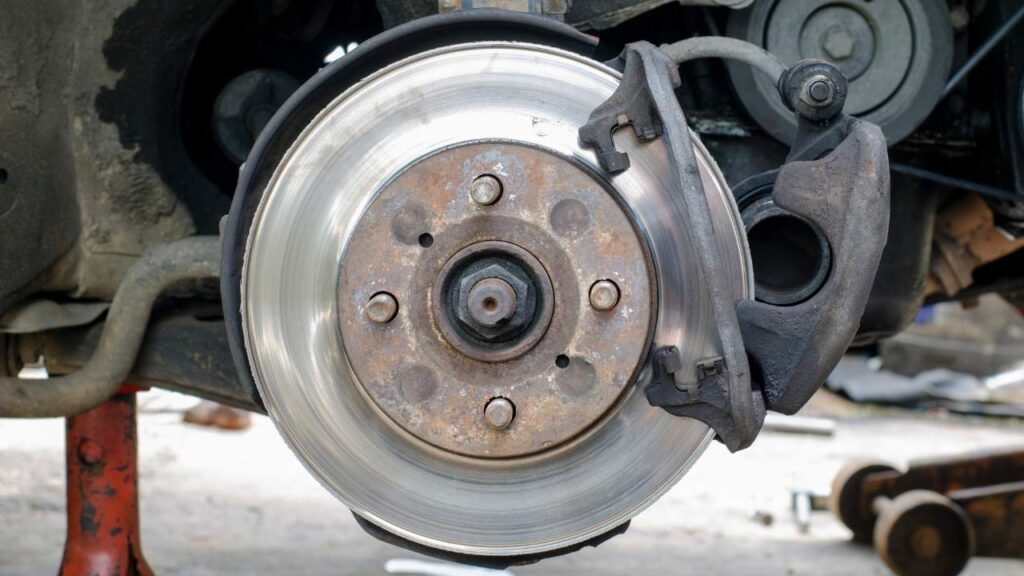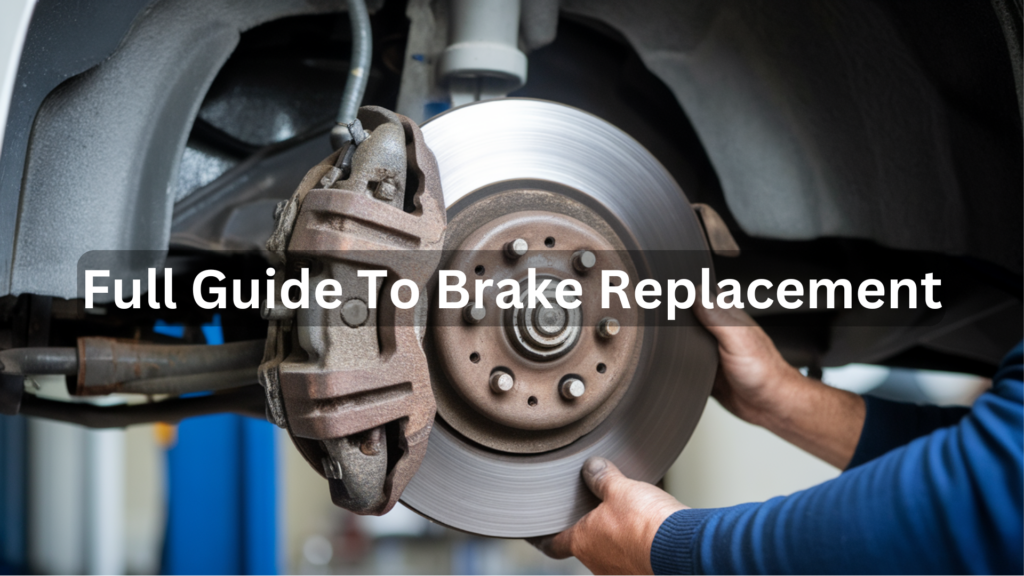Brake maintenance is one of the most important aspects of vehicle safety. Your braking system is responsible for safely stopping your vehicle, making it crucial to keep it in optimal condition.
However, many vehicle owners are concerned about the potential costs associated with brake replacements and repairs.
The brake change cost can vary significantly based on several factors, including the type of vehicle you drive, the specific components that need replacement, and where you choose to perform the service.
Understanding these variables can help you budget appropriately for this essential maintenance task.
Factors That Affect Brake Change Costs
Type of Vehicle

Different vehicles require different braking systems, which directly impacts the replacement cost.
Economy and compact cars typically have simpler, less expensive brake components, resulting in lower overall repair costs.
Sedans and midsize vehicles fall into the middle price range, while larger vehicles like SUVs and trucks require more robust braking systems with higher price tags.
Luxury and performance vehicles often feature specialized brake systems with premium components, leading to significantly higher replacement costs than standard vehicles.
Type of Brakes
The two primary brake types in modern vehicles are disc and drum brakes, each with different replacement costs.
Disc brakes, common on most modern vehicles (at least for the front wheels), consist of brake pads that press against a rotor.
They provide superior stopping power but are more expensive to replace, generally costing between $300 and $500 per axle.
Drum brakes, often found on the rear wheels of older or economy vehicles, use brake shoes that press against the inside of a drum.
These systems are typically less expensive to service, with replacement costs ranging from $200-350 per axle.
Parts Being Replaced
The brakes as a whole include many parts, all of which need replacement.
The specific components requiring replacement will significantly impact your total cost:
- Brake pads or shoes only: $100-300
- Rotors or drums only: $200-400
- Pads/shoes and rotors/drums: $300-700
- Complete system including calipers or wheel cylinders: $500-1000+
Most brake services involve replacing worn items like pads and rotors, but if your vehicle has more extensive issues, additional components may need replacement, increasing the overall cost.
Labor Costs
Labor rates vary widely from place to place. It will always depend on whom you choose for replacement work.
Labor rates vary substantially depending on your geographic location and the type of service provider you choose:
- Dealerships typically charge the highest rates, often $150+ per hour
- Independent mechanics usually charge moderate rates, ranging from $80-150 per hour
- National chains may offer more competitive rates, typically $70-100 per hour
- DIY replacement eliminates labor costs, though it requires technical knowledge and proper tools
Urban areas generally have higher labor rates than rural locations, reflecting the increased operating costs in these regions.
Brand and Quality of Brake Parts
The quality and brand of replacement parts play a significant role in determining costs:
OEM (Original Equipment Manufacturer) parts are designed for your vehicle model and typically offer the best fit and performance. However, they generally come with premium pricing.
Aftermarket parts are available in various quality tiers:
- Economy: Lowest price point but may wear faster
- Mid-range: Good balance of price and durability
- Premium: Comparable to OEM quality, sometimes with enhanced performance features
While premium parts cost more initially, they often provide better longevity and performance, potentially offering better value over time.
Average Cost of a Brake Change
Brake Pad Replacement Cost
For standard brake pad replacement, you can expect to pay:
- Front brake pads: $100-350
- Rear brake pads: $50-300
Front brake pads typically cost more because they handle approximately 70% of the braking load and wear faster than rear pads.
Brake Rotor Replacement Cost
When rotors require replacement due to warping, grooving, or reaching minimum thickness specifications:
- Front rotors: $200-500
- Rear rotors: $150-400
Rotor replacement becomes necessary when these components can no longer be resurfaced or have reached their minimum thickness threshold as specified by the manufacturer.
Full Brake System Replacement
For a complete brake service including both pads and rotors:
- Economy vehicles: $300-700
- Mid-size cars and small SUVs: $500-1000
- Luxury or performance vehicles: $700-2000+
These estimates include parts and professional labor for front and rear brake systems.
Signs You Need a Brake Change
Being aware of warning signs can help you address brake issues before they become safety hazards or lead to more expensive repairs:
- Squeaking or grinding noises when applying brakes indicate worn brake pads or metal-on-metal contact
- Increased stopping distance suggests reduced braking efficiency
- Vibrations or pulsations felt through the brake pedal typically indicate warped rotors
- Dashboard warning lights, such as the brake system indicator, should never be ignored
- Visible wear on brake components when viewed through wheel spokes
Addressing these symptoms promptly can prevent more extensive damage to your braking system.
How to Save Money on Brake Changes
There are several strategies to reduce the cost of brake maintenance without compromising safety:
Consider DIY replacement if you have the necessary skills and tools. Brake pad replacement is among the more accessible maintenance tasks for those with basic mechanical knowledge, though rotor replacement may require more expertise.
Obtain multiple quotes from different service providers to ensure competitive pricing. For the same service, price disparities between shops can be substantial.
Look for promotional offers, as many auto repair facilities run seasonal specials on brake services.
Use quality aftermarket parts instead of OEM components to reduce costs while maintaining acceptable performance and durability.
Perform regular brake inspections to catch wear early, potentially avoiding more extensive repairs later.
Conclusion
Maintaining your vehicle’s braking system is essential for your safety and others on the road.
While brake replacement represents a significant maintenance expense, the cost of neglecting brake issues can be much higher financially and in terms of safety risks.
By understanding the factors influencing brake replacement costs and recognizing the signs of brake wear, you can make informed decisions about when and where to perform this crucial service.
Regular inspections and timely maintenance can help extend the life of your braking system and provide peace of mind knowing your vehicle can stop safely when needed.
Remember that quality matters when it comes to brake components.
While it may be tempting to choose the lowest-cost option, investing in reputable parts and professional installation typically provides better value and safety in the long run.
Frequently Asked Questions
How Often Should I Change My Brakes?
Most brake pads last between 30,000 and 70,000 miles, but this varies considerably depending on driving habits, vehicle weight, and pad material.
Can I Replace Just the Brake Pads without Changing the Rotors?
Yes, in many cases. If your rotors are still within manufacturer specifications for thickness and have no significant warping or grooving, they can often be resurfaced and reused with new pads.
Are Dealership Brake Changes More Expensive than Local Shops?
Generally, yes. Dealerships typically charge premium rates for labor and parts compared to independent shops or chains.
How Long Does a Brake Change Take?
A professional brake replacement typically takes 1-2 hours for a complete service on all four wheels, but the exact time depends on the vehicle type.
What Happens if I Don’t Replace My Brakes on Time?
Delaying necessary brake replacement can lead to several negative outcomes. Worn brake pads can damage rotors, leading to more expensive repairs.


